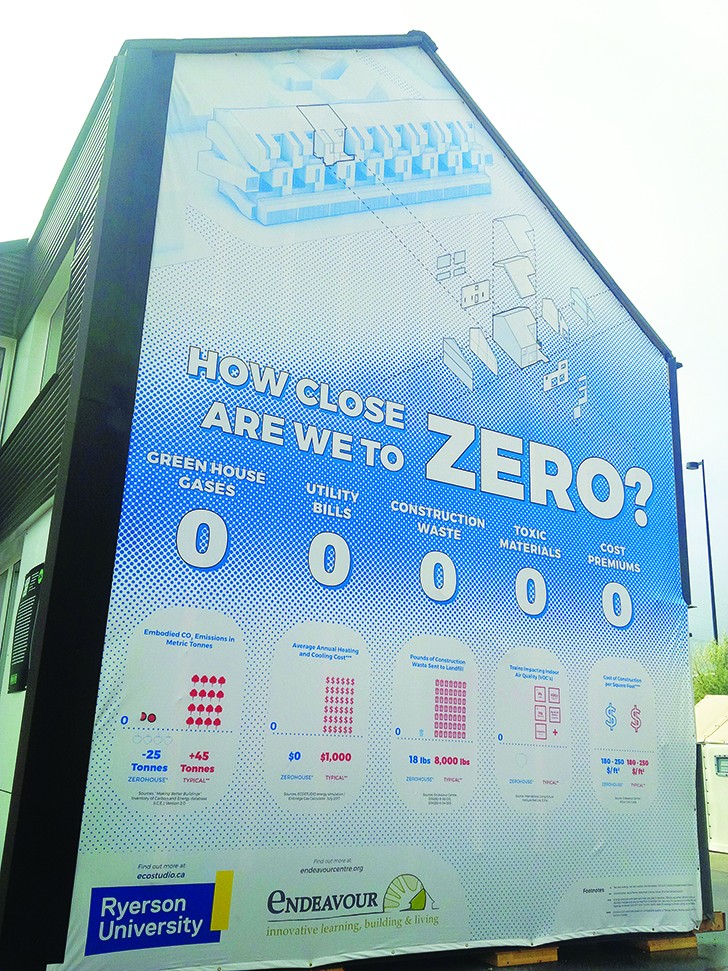Future looks bright for recovered polycoated aseptic and gable top commodity prices according to Carton Council
PSI Grade #52 prices up and down since introduced in 2011

Polycoated cartons, both aseptic (shelf-stable) and gable top (refrigerated) were given their own ISRI Paper Stock Industry (PSI) classification - PSI Grade #52 - in 2011. According to Isabelle Faucher, managing director of the Carton Council of Canada (CCC) this was a milestone for the industry.
"We consider it a milestone because it gave cartons recognition as a standalone grade, with ISRI being the key reference body for the specifications," says Faucher. She says the benefits of a dedicated grade are two-fold. "There's the environmental aspect and the economic one," she says. "From an environmental standpoint, there's a maximization of the actual yield of fibre when cartons are pulped for recycling on their own, as opposed to being processed with other fibres. From an economic standpoint, the price paid for cartons as a standalone grade, since 2011, has been more stable and consistent."
According to Jason Pelz, vice president of recycling projects, Carton Council of North America (of which CCC is a part), since PSI Grade #52 as a commodity was created, the Carton Council's focus has been to grow end markets wherever possible.
"Over the last six to eight months the market for Grade #52 has really grown," remarks Pelz. "More companies are seeing the value of cartons for the quality fibre and the poly and aluminum fractions." Plus, he says cartons can compete with more established grades as demands change. "Grade #52 is a good replacement for sorted office paper," he says as an example. "While some fibre commodities go down in availability, #52 is readily available, offering good fibre, as well as plastic and aluminum content, that can be used in a variety of emerging end markets."
The price paid for grade #52
A look at Ontario commodity price trends over the last two years, using the Continuous Improvement Fund (CIF) Price Sheet (www.thecif.ca/cf-price-sheet) reveals an initial rise in the commodity price of Grade #52 coming out of 2016, with a high of $120 CDN/tonne in February 2017. The price was down below $40/tonne by the end of the year, and in March 2018 remained close at $42/tonne. Looking back further, CIF data shows #52 prices went from an average of about $57/tonne in 2011, to about $114/tonne in 2016.
The price paid for the grade has been similar throughout North America as a whole during this same time period.
"The price of Grade #52 in North America dropped through 2017," confirms Pelz, "but there has been a steady increase since November. Currently, the price for Grade #52 varies from a low of about $40 to $45/tonne to a high of $80 to $85/tonne, FOB shipping point" [the price at the seller's dock].
"Domestically and globally, markets for Grade #52 are growing," he continues, adding that the U.S. has multiple major domestic buyers of cartons currently, both new and established, and countries including Mexico, Japan, Korea and Thailand are steadily increasing the amount of Grade #52 they are buying.
"There have been issues over the last few years with some mills being overcapacity, and so #52 was not moving," adds Faucher. "But now that we have had new markets come online in North America, and those issues seem to have been resolved, we're confident that we're going to see the price continue to rise."
Minimal Effects from China's scrap import policies
With respect to the scrap import restrictions that have come in to play from China over the last year, Faucher and Pelz agree - it has little direct effect on the market for recovered Grade #52.
"There are no buyers, no recyclers of cartons in China, that I'm aware of, so it's not affecting us directly," Faucher says. She admits however that there is some indirect impact, simply because of the extremely high purity levels set by China on mixed paper. "Cartons are considered a contaminant, along with many other non-mixed paper items that may be in mixed paper bales," she notes.
Pelz agrees that the restricted import policies from China over the last year, have had minimal effect on the market for Grade #52 specifically. "Cartons have been affected indirectly by scrap import policies in China because everybody in the recycling industry has been affected," says Pelz. "I don't think there is a commodity out there that has not been affected somewhat by China's recent changes in policy. But cartons, Grade #52, do not flow from the U.S. to China - they never have."
Out of the "Mixed"
If one compares the market price for Grade #52 to Mixed Paper (referring again to the CIF Price Sheet for Ontario) it is notable that as of March 2018, Mixed Paper prices were around $18/tonne, well below the price for Grade #52. Its price as a commodity has tracked above mixed paper off and on since 2011, so this is not a huge surprise. It's significant though because it makes the case for the value of increased sorting of Grade #52 from mixed streams - a practice the Carton Council of North America has promoted heavily from their start in 2009.
"If a facility does not sort cartons, typically, they'll put them in with the Mixed Paper. But recently the price paid for cartons has been higher than the price paid for Mixed Paper," says Faucher. "In Ontario, currently we're seeing Mixed Paper prices pretty close to zero, or negative. So cartons are worth more again, relatively.
"For those that don't separate their Grade #52 from mixed paper, they are losing out on getting the highest value for a resource that continues to grow in demand."
Moving forward
At this year's Canadian Waste Resource Symposium, held March 13-15 in Quebec City, Isabelle Faucher told delegates about the Carton Council of Canada's comprehensive strategy to increase carton recycling across the country. She said the primary lever of the strategy is driving information and knowledge resources to the participants in the entire carton value chain, from consumers to recycling companies, to the brand-holders which use cartons to package their products.
Faucher emphasized their endeavours in helping MRF operators improve performance at their facilities, pointing to the CCC's work in sharing best practices and recent work with individual MRFs to determine their best solution for positive sorting - separating cartons from other materials to achieve maximum value.
"Increasing consumer participation is also an important part of our comprehensive strategy," said Faucher at the symposium in March. "The CCC wants to make sure consumers know cartons are recyclable and are empowered to recycle them. So, we engage with municipalities and other organizations focused on the benefits of recycling to promote this objective."
She says the CCC, as well as colleagues from the Carton Council of North America, are also working to help build and strengthen end markets. One example of a company whose recent product innovation has led to a growing domestic U.S. end market is Re-Wall. The Iowa-based company is using whole cartons to produce durable building and construction materials. (Shown opposite page.)
"Re-Wall uses an environmentally friendly process, without water or chemicals, to create products that benefit from the strength, durability and resistance to mould and moisture of cartons," says Faucher. "And they recently expanded their facility, more than doubling capacity and increasing their demand for cartons.
"The properties of cartons, the fact that they are resistant to humidity and resistant overall, are driving new applications, in addition to the traditional process of hydro-pulping at a mill, whereby cartons are turned into new paper-based products," she continues.
"The humble carton is a growing part of Canada's packaging solutions. It offers safety and convenience for a wide range of fresh and shelf-stable consumer food products, and adds a high-value fibre resource to the mix of valuable materials collected in recycling programs.
"Our goal is building and growing carton recycling, and we are proud that our efforts and those of our partners and stakeholders in the value chain are having an effect."




